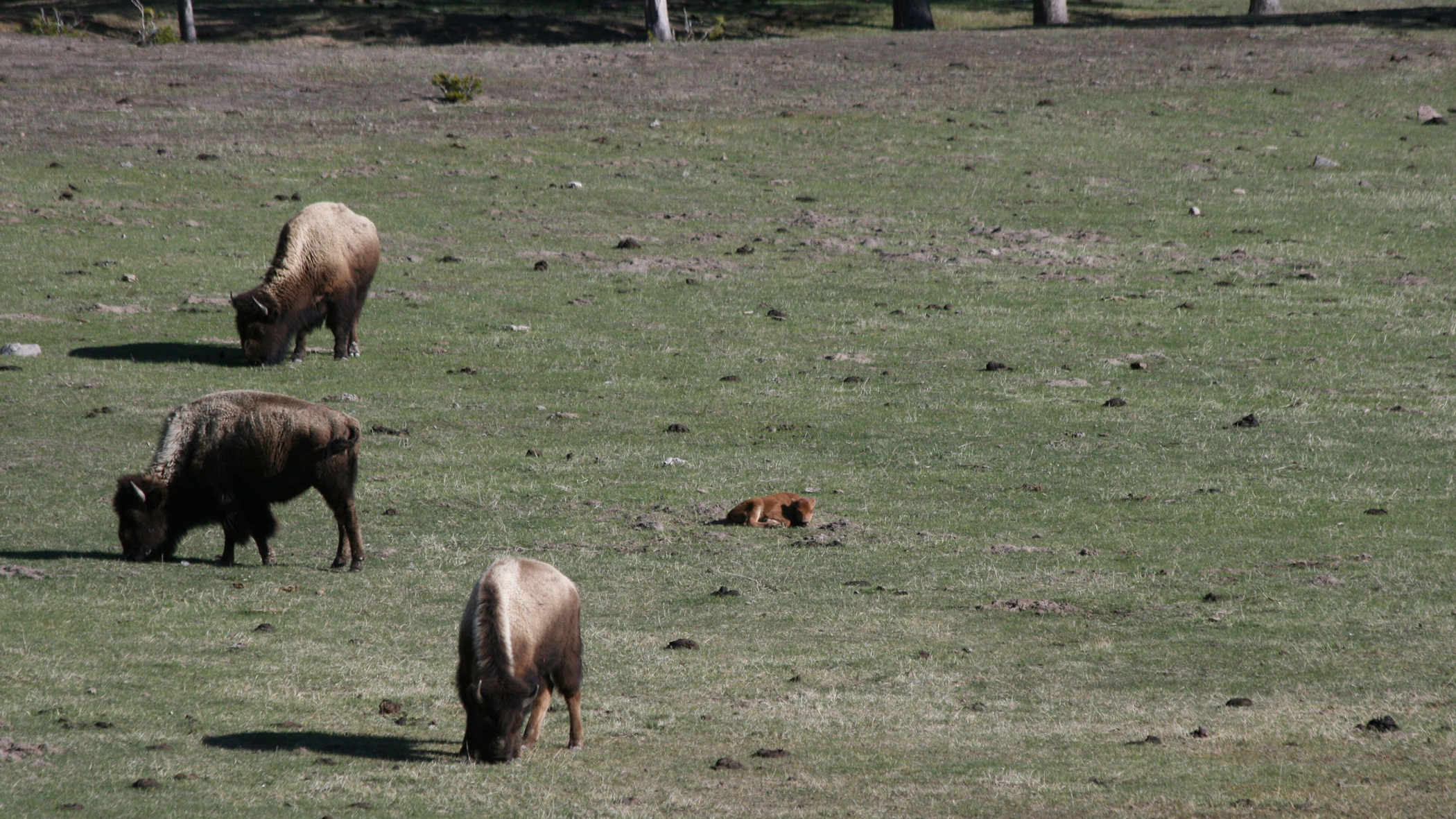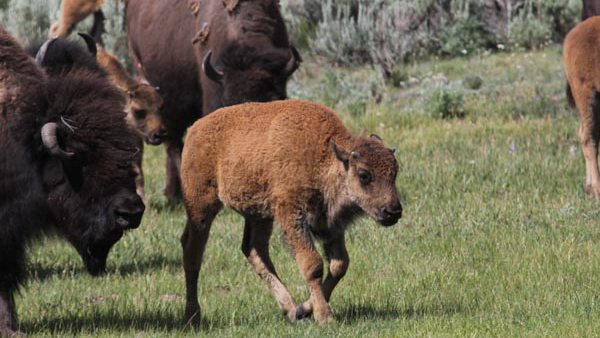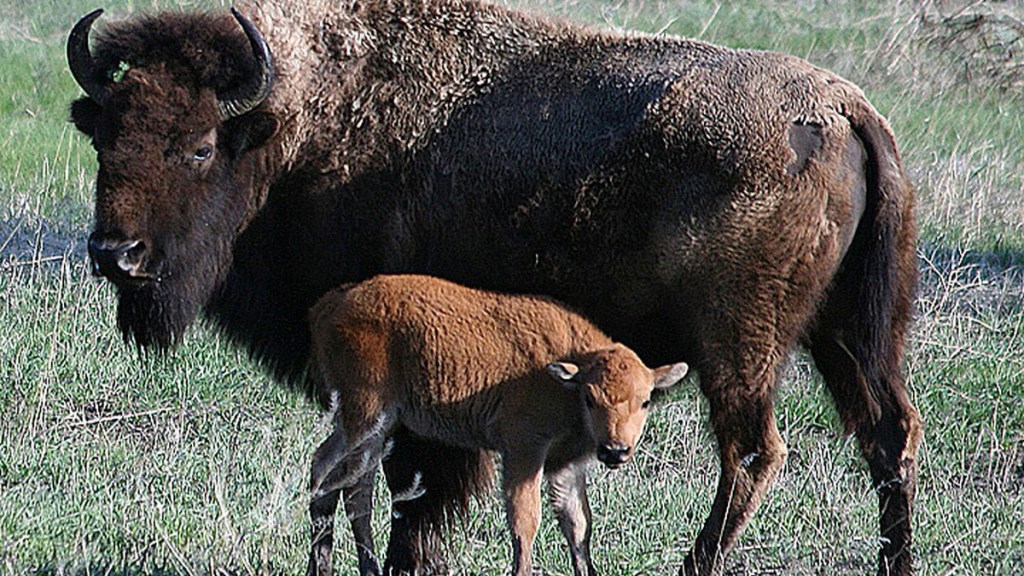Yellowstone National Park is my backyard. Relatively speaking. I’m 100 minutes from the West entrance. I’m so close, I have the luxury of enjoying the park before the tourists arrive. My husband and I bike Yellowstone with our boys before cars are allowed to enter in the spring. We camp there before Memorial Day too. Then we avoid the park like the plague until October when the tourists leave and we have the park to ourselves again.
We know the best routes for big game. That’s why we have 10-bear days. (10 grizzly and black bear sightings in one day.) We know the best ice cream is in Mammoth, the worst bathrooms are at Paintpots and wolfies always hang out in Lamar Valley. Those are the diehards who watch wolves year round.
We joke in good fun with the rangers about when they feed the wolves and how many years until deer become elk. Neither scenario really happens, but other tourists ask questions like these all the time.
We know this, but what does happen in the park isn’t always good fun. I have footage of a grizzly sow and two cubs eating an elk calf while an elk cow watches from a few feet away. The audio track has to be buried at zero when I edit the footage because all you hear is a ranger yelling, “Lady in the purple pants move back,” over and over again.
Purple pants is oblivious to the warning and keeps moving in for a front row seat like she’s at the movies, but this isn’t the movies. It’s the wild. And we must let it be regardless of how moved we are by what we see. Do not feed, touch or take the wild. It is not ours to take. Two tourists thought otherwise in early May.
“They were demanding to speak with a ranger,” says Karen Richardson, park field trip chaperone from Idaho. “They were seriously worried that the calf was freezing and dying.”
Richardson watched a father-son pair pull into Yellowstone’s Lamar Buffalo Ranch with a bison calf in their backseat. The tourists thought the calf was too cold. Yellowstone is cold.
We take winter coats regardless of the time of year and consider ourselves lucky survivors if we go one whole trip without wearing them. That calf was only going to see more cold as the short summer waned. Now it won’t see any cold. Returning it to the herd didn’t work.

“Interference by people can cause mothers to reject their offspring,” the park stated in its news release about the incident. “In this case, park rangers tried repeatedly to reunite the newborn bison calf with the herd. These efforts failed.”
Mothers don’t understand this. I’m a mother and I don’t understand this. I’m also not a bison. I’m a human. Placing human emotions on an animal doesn’t work. I’ll admit I struggle with resisting the urge to do it, but I do it. So do my boys.
We have our own baby bison moment. The sight never leaves my mind. I know my boys remember it too because they mention it every time we stand on the banks of the Firehole River.
It’s May 2011. It’s a sink-em-deep snow year. The drifts so significant, we can’t see the fire ring in our campsite let alone make a fire. It’s cold as usual, but it’s not crowded and we count on that.
Bourbon colored bison calves are stumbling along with their herd across the river from us. We watch them while we skip rocks. My human nature quickly picks up on the herd’s motherly traits. They keep their kids back behind them in the safe zone just like I do. The babies nap. The moms stand guard. The babies are hungry. The moms feed them. All seems right. Then the herd starts swimming and all goes wrong.

I sense trouble as soon as the first calf starts swimming. The current is too cold, too swift. The calf is flailing. The urge to rescue rages in me, but I stay put. So do my boys.
The calf comes up for air then goes under again. This happens five times.
My grip on my sons tightens. Jumping in that river in early spring is suicide. Why don’t these hairy moms know that? What could possible motivate an icy river swim that risks the lives of babes right now?
Panic pitches high in my gut. I look to the herd. I don’t know what I expect to see. A stop. A head turn. Something. I couldn’t even pick out the mother.
On the sixth rise, I know it’s over. The calf’s shiny black nose isn’t inhaling deeply anymore. It silently sinks. Its head doesn’t surface again. I stand on the bank crying. It’s a horrible moment. I realize I’m silly for expecting a human response from the wild just because I saw them guard their kids like I do.
I look down at my boys and realize something else. Sometime during those gasping-for-life moments my boys started holding my hand instead of me holding theirs.
“It’s okay mom,” the youngest says. “There will be more babies.” While the oldest offers, “Think about something else. Anything else.”

Easier said than done, but it will be done. Eventually. I still see that calf’s head going under when I look at the Firehole River, but I don’t cry anymore.
A dynamic wiser than me was in play that day. I just know it. Doesn’t make it easy, but it makes it right. Bison live in the place I visit. They know better.
Yellowstone is my backyard, but it is their home. We should respect their home and their right to survive in it as they see fit. It is unfair of us to try to control or even understand what’s going on among the animals. We’ve lost that right. We are not wild enough anymore.
Millgate is an outdoor journalist based in Idaho Falls, Idaho. See more of her work at www.tightlinemedia.com




the first part about the tourists putting bison in there car was a lot like something I read before, where in 2016 they also thought the calf was going to freeze to death. that mother rejected her calf so that part of the story was no surprise to me. and I agree, I don’t think I could ever look at that river if I saw that. neither could my brother.
When I originally commented I seem to have clicked on the -Notify me when new comments are added- checkbox
and now whenever a comment is added I recieve four emails with
the exact same comment. Perhaps there is a means you are able to
remove me from that service? Many thanks!
Hi Celesta, We are not able to remove you, have you checked the emails to see if there is an “unsubscribe” or “stop receiving notifications link”? Thank you!
Isn’t respect, whether for an animal or for a fellow human, allowing a living thing to be itself without our judgement?
With bison, maybe we could start by calling their young calves. If we stop mentally appropriating the young of other animals ‘babies’ – as though they were little humans in fur suits – maybe that would help us to not only see them a little more clearly for what they truly are, and to appreciate them more honestly.
For millennia, our ancestors followedthe wild herds of herbivores that provided most of their needs- food, clothing, shelter, and many of their tools. At some point, following wild herds shaded into nomadic herding of domestic herds. That said, the urge to ‘rescue’ that bison calf may give us a snapshot at the beginnings of the domestication of animals.
I know exactly what you mean! I can’t even watch episodes of wildlife in their natural habitat because I can’t handle watching a big cat hunting the deer, taking them down, killing them because they are hungry. It is the circle of life!